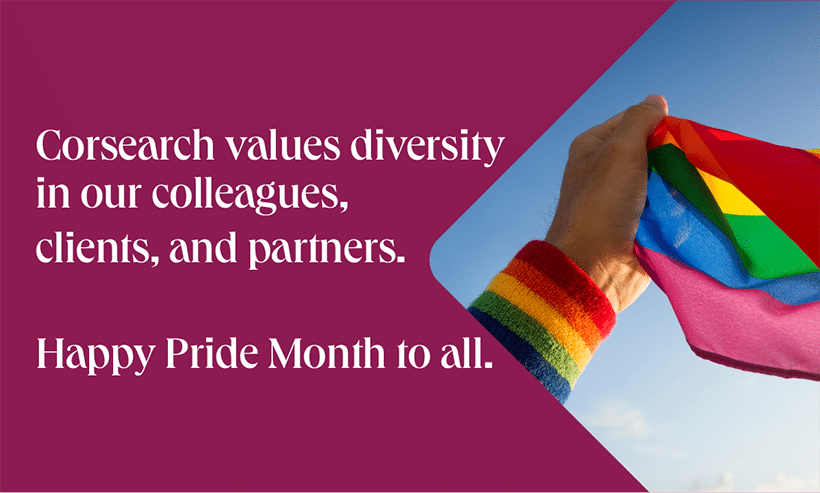Blog
Protecting Pride: A Brief Look at the History of the Rainbow Flag
- Brand Protection

For many people, the annual LGBTQ+ Gay Pride Month in June represents an important cultural milestone. Each year, LGBTQ+ communities globally celebrate the progress towards equal rights that the pioneers within those communities worked for in the past and continue to campaign for today. As a company which values diversity in our colleagues, clients, and partners, Corsearch would like to wish a happy Pride Month to all.
As unconnected as it may seem to the world of trademarks and brand protection, the history of Pride does contain important touchpoints with the work we do, albeit from the reverse perspective. Pride celebrations are well known for their exuberant combinations of symbols. The most recognizable symbol of LGBTQ+ identities is the rainbow flag, a banner deemed so important that it was acquired by New York’s Museum of Modern Art in 2015 so that it could be added to other cultural icons including the @ symbol and the Google Maps pin.[i]
Although the rainbow flag is as instantly recognizable as the most iconic trademarks, it may surprise you to know that the creator of the flag never applied for a trademark or copyright protection, or exerted rights in this symbol of solidarity. The flag was designed and launched in 1978 by the artist Gilbert Baker, who described his intention from the start:
“I thought that we needed that kind of symbol, that we needed as a people something that everyone instantly understands. [The Rainbow Flag] doesn’t say the word ‘Gay,’ and it doesn’t say ‘the United States’ on the American flag but everyone knows visually what they mean. And that influence really came to me when I decided that we should have a flag, that a flag fit us as a symbol, that we are a people, a tribe if you will.”[ii]
Having designed this new tribal mark, Baker told the civil rights attorney Matt Coles that it had been designed for everyone and that he needed assistance with preventing a rights advocacy group from applying for a trademark and claiming ownership. The pair succeeded in keeping the flag free and it remains so to this day.[iii]
Is the Rainbow Flag Copyrighted?
Although Baker could have potentially exerted his ownership over the flag under U.S. copyright law as an “original work(s) of authorship fixed in [a] tangible medium of expression” (17 U.S.C. § 102), he chose to avoid such claims throughout his life.[iv] As a result, although the gay pride month rainbow flag could qualify for copyright protection, it has become a hugely popular ‘free’ symbol with generations of people who use the colorful device in myriad ways to assert their own beliefs and identities.
Corsearch considers IP protection to be the heart of what we do and a reflection of the way the rule of law helps drive innovation and just, equitable relationships. In this exceptional case, however, the world has benefited from the free access which the flag’s creator granted to every person. We hope it’s used with the true pride it deserves.
***
[ii] https://www.moma.org/explore/inside_out/2015/06/17/moma-acquires-the-rainbow-flag/
[iii] https://www.aclu.org/blog/lgbt-rights/meet-man-who-kept-rainbow-flag-free



